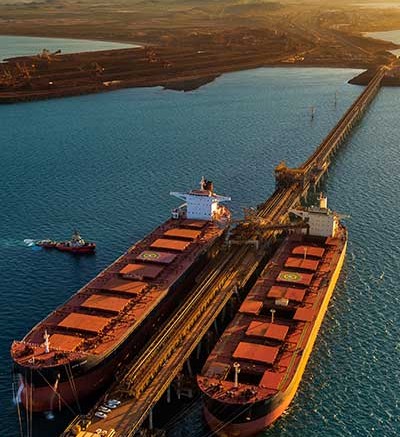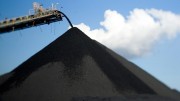Commodity prices this year have fallen below the previous recessionary lows of early 2009, and are now at levels not seen since January 2007, Patricia Mohr, vice-president of economics at Scotiabank, said during a presentation at the Prospectors & Developers Association of Canada conference in Toronto.
China’s massive infrastructure spending program helped lift commodity prices in 2009, but the latest dip in prices, Mohr says, is mostly due to “a fight for market share” in a lacklustre global economy. The world is entering its fourth year when global gross domestic product has grown just a little over 3% per annum, she warns.
“I’m beginning to realize that 3% per annum — while it is enough to turn over the global economy — it’s not high enough to really put any momentum behind global commodity prices and markets,” she says. “And when you get some capacity expansion, for example, such as in copper, and massive expansion in iron ore, and huge expansion in oil production from U.S. shales, all of this is occurring in a very lacklustre market around the world, and leading prices lower.”
In the case of iron ore, specifically, while it is true China’s economy has slowed, she says, that is actually “a red herring,” because what is really going on is that the world’s four largest iron ore producers have expanded iron ore capability “irrespective of what happens to price.”
She calculates that Rio Tinto can produce iron ore in Western Australia and deliver it to a port in Western Australia for just over US$17 per tonne, and for another US$7 per tonne, the miner can get that iron ore all the way to northern China. Iron ore prices have dropped from US$140 per tonne in early 2014 to US$63 per tonne, she notes, “and probably are not going to lift very quickly as that massive expansion continues in Western Australia and in Brazil.”
The strength of the U.S. dollar against most of the currencies around the world (with a few exceptions), meanwhile, is having a deflationary impact on global commodity prices, she points out. In Russia, for example, producers of iron ore are now discounting dollar prices in Asian markets, which is having a ripple effect in North America.
Looking ahead, Mohr says commodity prices will likely bottom in the next six months, but she isn’t optimistic that this will bring about a major improvement. “We’re going to have a modest recovery — but I do think it will be modest — because we are expecting the U.S. dollar to strengthen further, when [Janet] Yellen of the U.S. Federal Reserve, decides to lift the federal funds rate, which we think she might do as early as June this year, and if not in June, it will be later this year.”
Unlike the modest recovery Mohr expects in global commodity prices, however, she says the bull run in base metals will return by 2017–2018. One of the things that has hurt sentiment for base metals more than anything, she says, has been the consensus view that there is a wave of new copper mine expansion, which could take another couple of years to move through.
“On that basis, Doctor Copper is expected to be fairly weak, and I think a lot of the funds take that to mean that base metals as a group are going to stay fairly weak,” she explains. “Now I take issue with that, because we have quite a good price forecast for both zinc and nickel in the next few years.”
She contends that once the expansion in copper is over, which she believes will take place in 2017, the sentiment is going to change for the base metals, and prices will move up again. One reason for that, she argues, is demand for car ownership, particularly in countries like China. According to her most up-to-date figures, there were just 88 cars per 1,000 people in China in 2013. (In India the ratio is 26 per 1,000, and in Mexico it’s 286 per 1,000.)
“Everyone in China wants to own a motor vehicle, and they’d like an SUV,” she says. “SUV sales last year were up 40% in China … once we get through the next couple of years, I think this is going to lead to much stronger base metal prices.”
Zinc is Mohr’s number-one pick, and she forecasts prices will move up to US$1.50 per lb. in 2016. Copper, she says, will remain flat at US$2.75 per lb. for the next two years, but longer term should reach US$3.50 per lb. She estimates the nickel price will reach US$10.55 per lb. in 2016. “I think nickel will do exceptionally well,” she predicts, “and Sudbury is going to come back into its own in 2016.”
As for gold, she expects prices this year will average US$1,225 per oz., due to the looming interest rate hike she expects from the U.S. Federal Reserve, either in June or before year-end.
“That is going to lead to even more strength in the U.S. dollar,” she says. “The U.S. dollar is the ultimate safe haven. Not gold — it’s the U.S. dollar.”






Be the first to comment on "PDAC 2015: Scotiabank’s Patricia Mohr predicts ‘modest’ recovery in commodity prices"